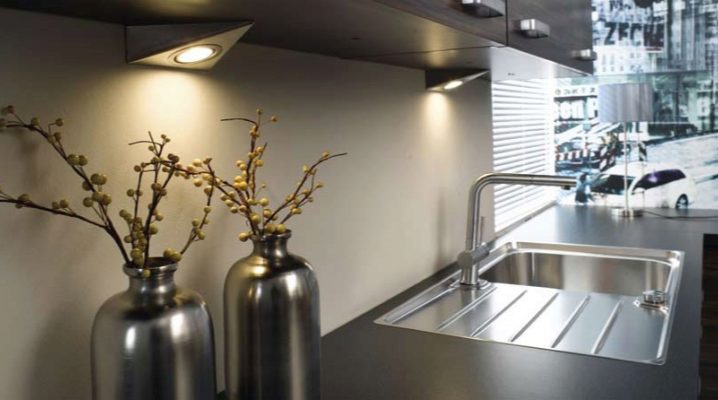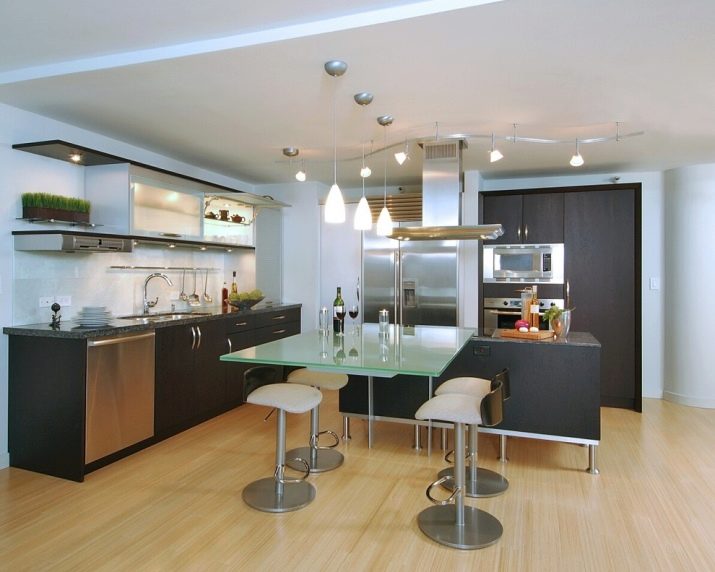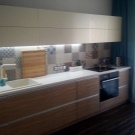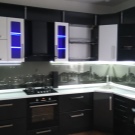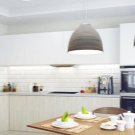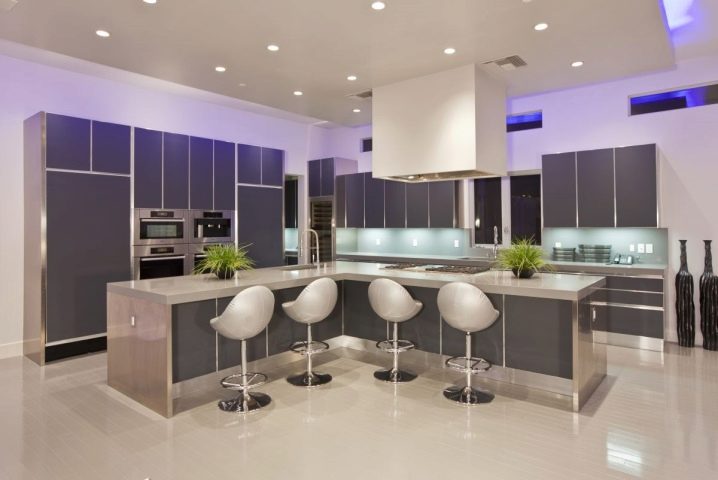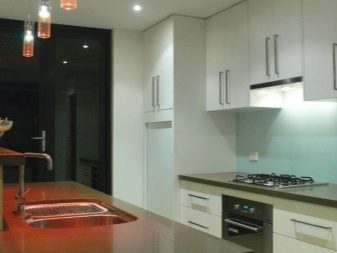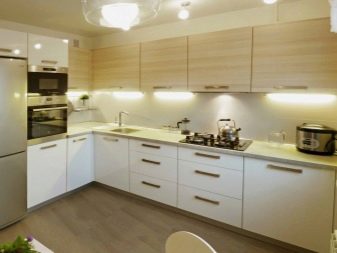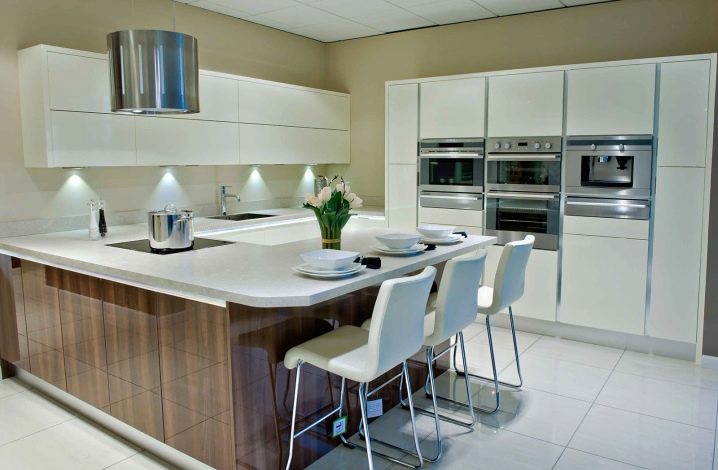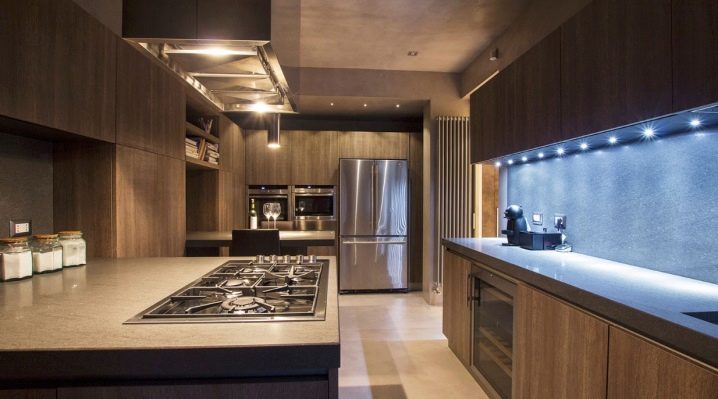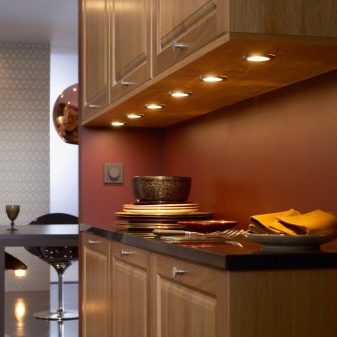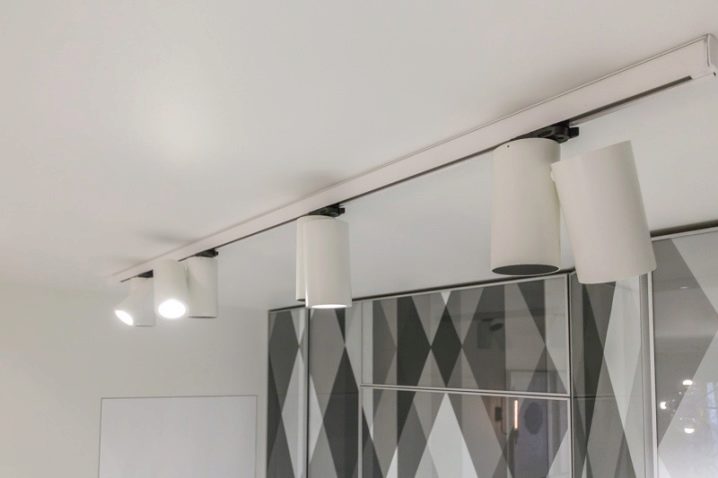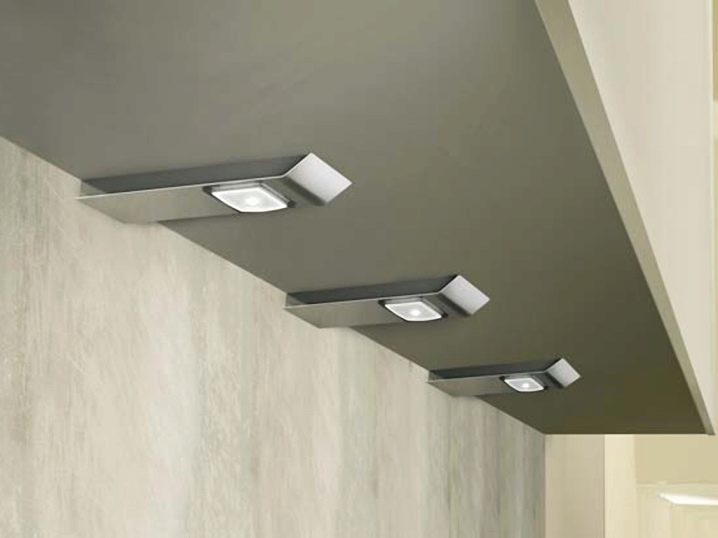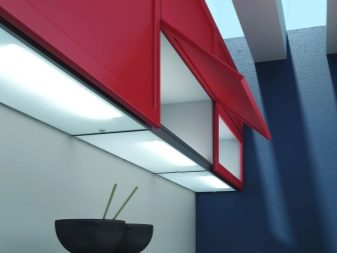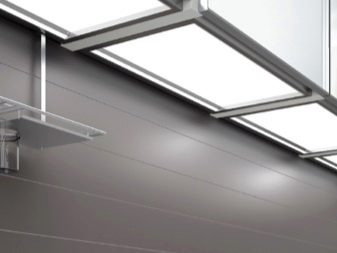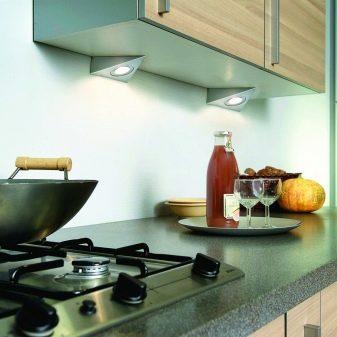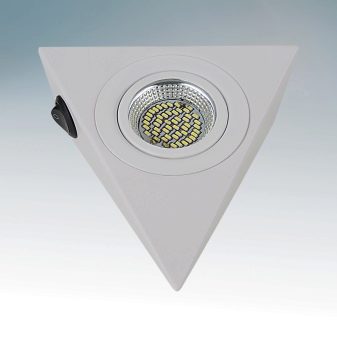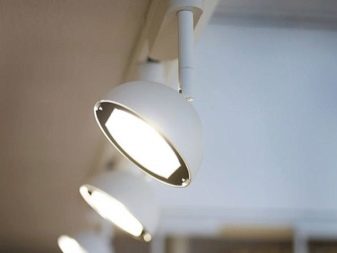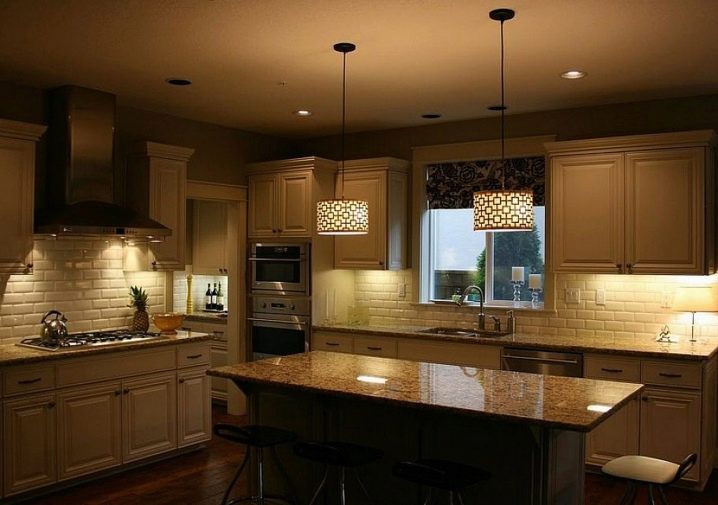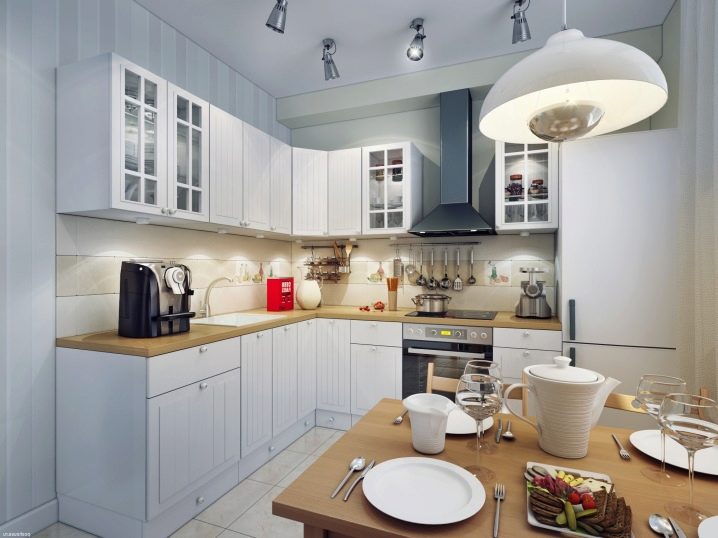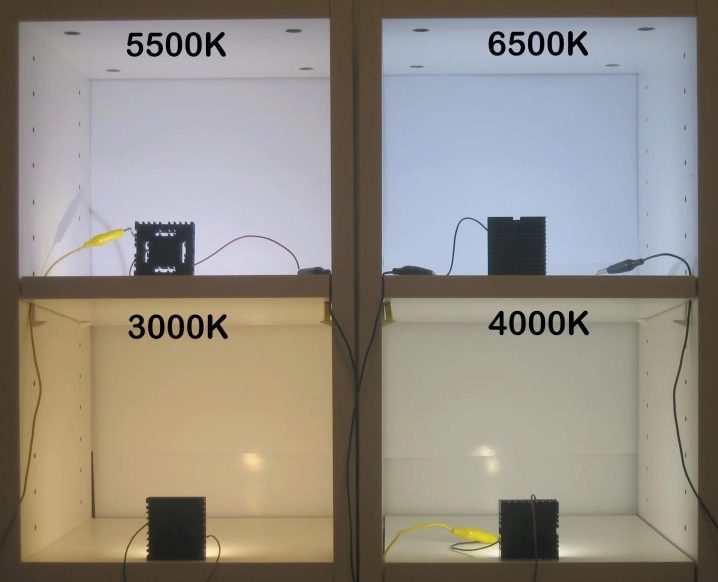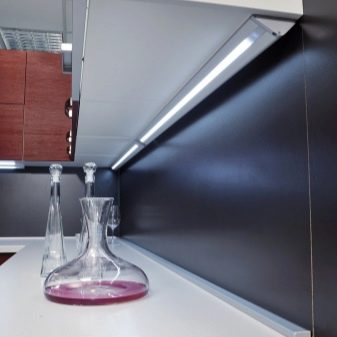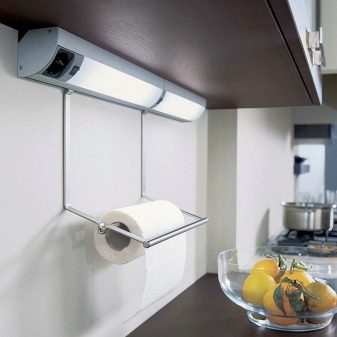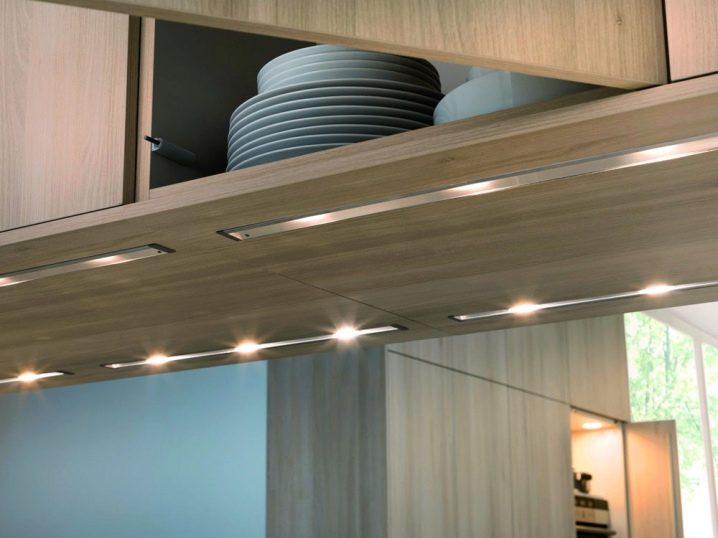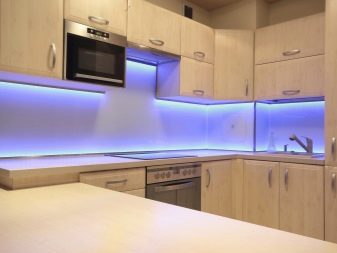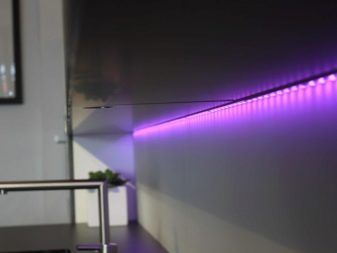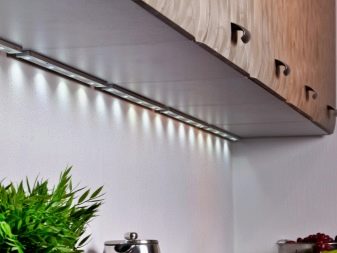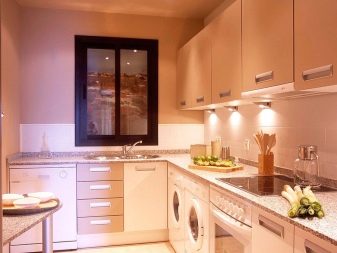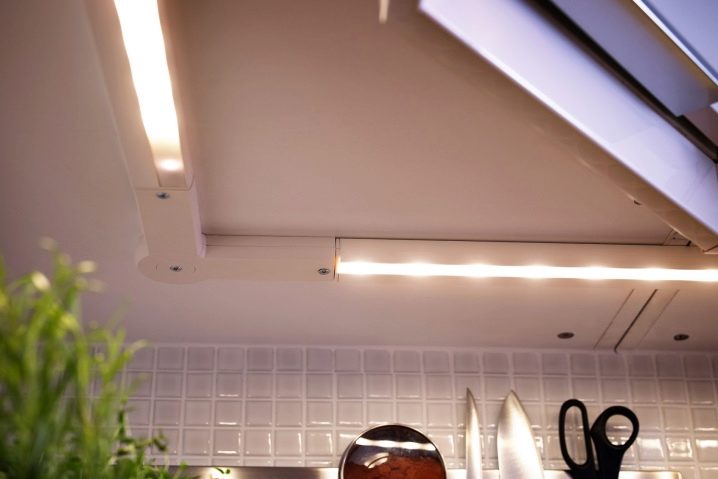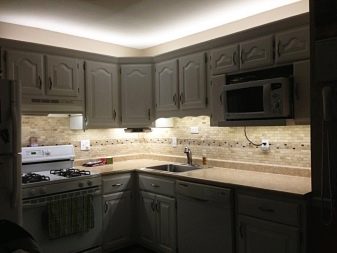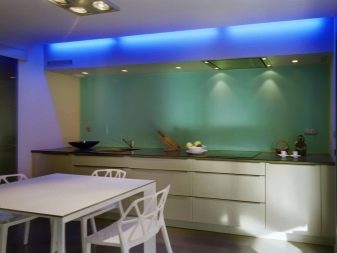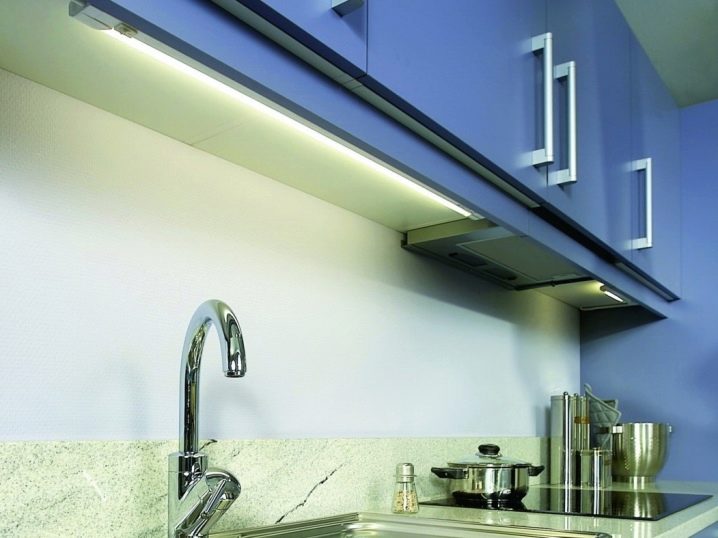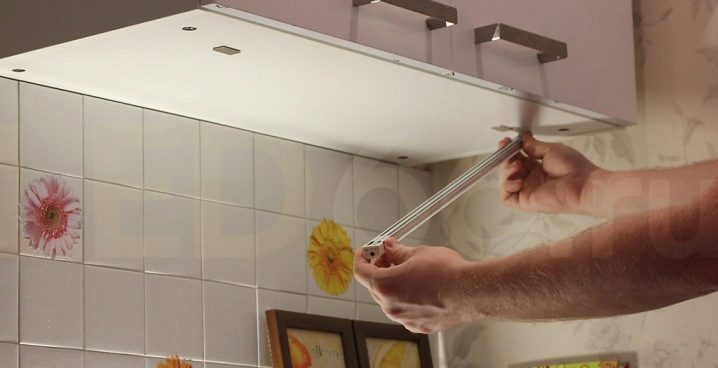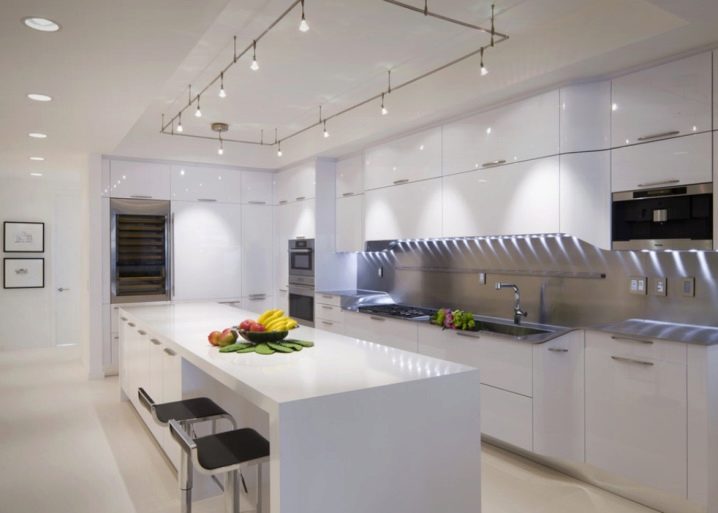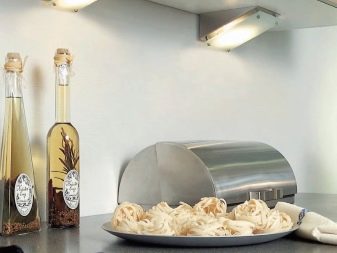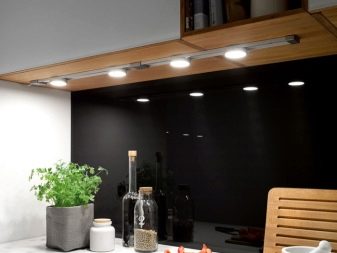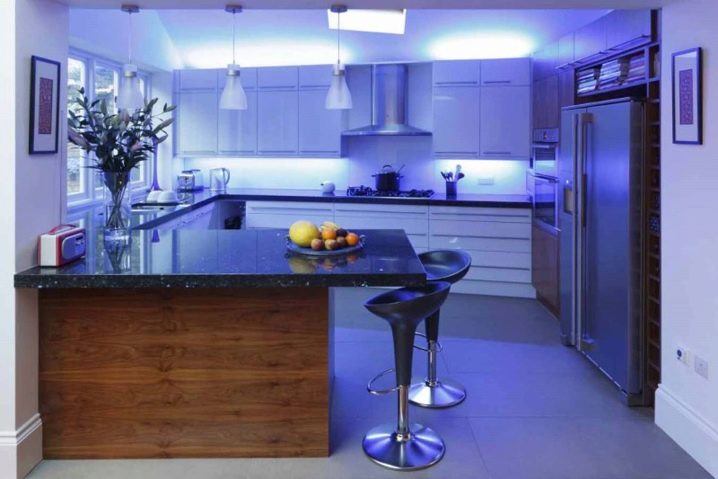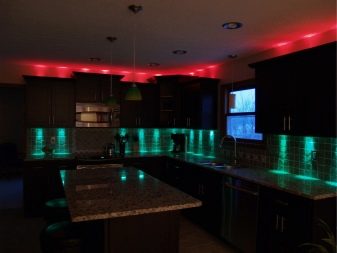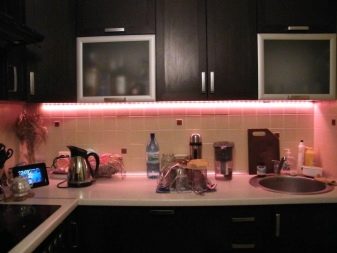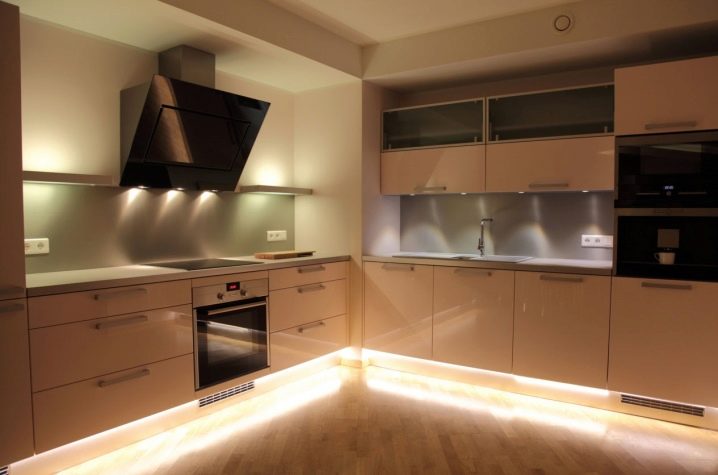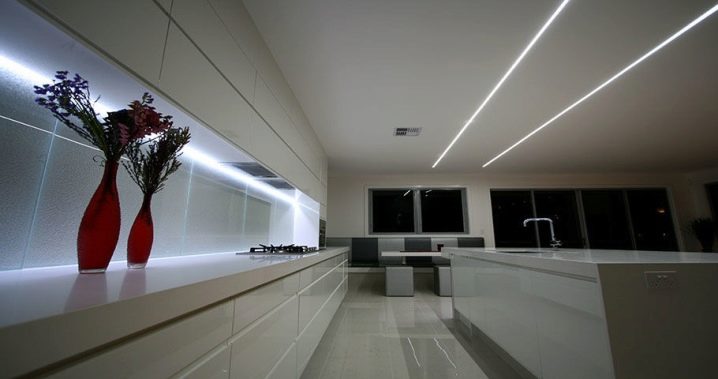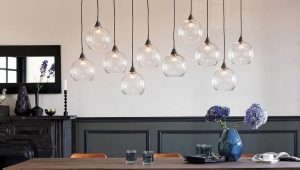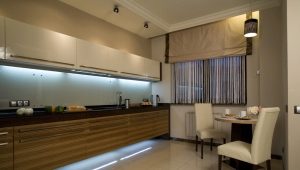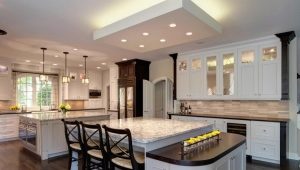Overhead LED lights for kitchen under cabinets
Almost every housewife is faced with the fact that for comfortable work in the kitchen is not enough natural light or only the ceiling light. This is especially true in winter, when it gets dark early, and in a small kitchen, cluttered with wall cabinets, almost nothing is visible. It is inconvenient to install additional table lamps in such places, and hinged LED lamps become a salutary way out of the situation.
Features and benefits
The main advantage of LED lighting under kitchen cabinets is the convenience of location. Being below eye level, the light will not blind, and at the same time it will evenly illuminate the working surface. Compared to conventional lamps, they are low energy consuming.
LED lamps have a high light output - almost 100% of the electricity turns into light, and do not heat up.They have a favorable spectral characteristic, without ultraviolet radiation, thanks to which the eyes are less tired. Also this light is well suited for the process of cooking - it does not distort the colors of the products.
Furniture fixtures allow you to save space in the kitchen, they are easy to install and move if necessary. They are characterized by a long service life (40000-50000 hours) and, unlike energy-saving lamps, they do not have mercury elements.
The only drawback of these devices is, as a rule, their high price.
Species
Currently, there are three main types of LED lamps or, as they are often called, led-lamps (from the English Light Emitting Diode), differing in the type of installation:
- invoices;
- suspended;
- embedded
Overhead lights are different from the rest, first of all, ease of installation - it is mounted on a metal profile or wooden grille directly to the ceiling or suspended structures. There is a large variety of models of overhead lights, all of them have a very aesthetic appearance.
Suspended lamps are conveniently installed in rooms with high ceilings. Most often it is offices, warehouses, sports halls, etc.Fastening is carried out using special brackets or cables.
Recessed or embedded fixtures are designed for suspended ceiling structures. Cases of devices are equipped with spring-loaded legs, which are used for reliable fixation to special platforms mounted in the ceiling.
Touch LED lamp looks like a fluorescent lamp, and is a linear lamp, which can be turned on and off simply by touching your finger. They can be mounted on magnets to metal surfaces or metal brackets, which are usually included in the package.
Panel lamp - this is one of the latest developments in the led industry, gaining all the great popularity due to its features. The thickness of the panel does not exceed 14mm, which allows you to mount it even on very low ceilings. At the same time, diffused white light visually lifts the ceiling and expands the space. Energy savings of up to 50% compared with other lighting fixtures. It is possible to use the panel lamp as in various institutions - schools, offices, hospitals, and in premises.
Corner LED lamp is a design of two lamps, interconnected at a right angle. It is convenient to use such elements to create continuous stripes of cold white light, which is sometimes necessary for the realization of design ideas.
Spot lights are spotlight LED spotlights. As a rule, they are a structure of several separate lamps, on legs or flat, each of which is directed in its own direction. The spots are turning and non-turning.
Colour temperature
According to the color temperature of the emitted light, LED lamps can be divided into three groups:
- Devices of warm light - giving radiation in the range from 2700K to 3200K. Such lighting is recommended for living rooms, living rooms, bedrooms, children's rooms.
- Devices of neutral light. The radiation spectrum is in the range from 3500K to 4200K. Such lighting is usually used in office buildings or other public facilities - hospitals, shopping centers, administrative premises.
- Devices of cold light with radiation more than 5000K.Well suited for lighting kitchens and other rooms where bright but not harsh light is important.
How to choose
Choose LED lamps for the kitchen should be based not only on their appearance, but also technical characteristics. Key points to consider:
- Colour temperature;
- luminous flux (the higher, the lighter);
- power (the larger the room, the greater the power required for lighting);
- manufacturer;
- LED service life;
- supply voltage;
- angle of dispersion of the light flux.
Also, when choosing luminaires, it is important to take into account that together they create a continuous luminous flux, without creating unnecessary shadows and without complicating the work.
A great solution for lighting the work area is the Fraga kitchen light. It is a linear sensory device with LEDs located at equal distance from each other (from 12 to 18 depending on the length). Such a lamp has a rather high cost (from 2,000 rubles), but at the same time it meets all the requirements for lighting a kitchen worktop.
In addition to point and linear lamps, conventional LED strip is often used as a backlight. You can simply stick it under the wall cabinets under the entire length.This is the most budget and easy to install option, besides, the tape serves for a very long time, is not at all afraid of kitchen moisture and exists in a large color range, which allows you to create the most original lighting solutions.
Locations
The choice of the location of the lamps depends on the characteristics of each individual kitchen and on the designer’s imagination or the hostess herself.
- Under the wall cabinets. Main location, very convenient for the work area. Lamps are installed in the angle between the bottom surface of the cabinet and the apron, in the middle of the bottom surface or closer to the edge, depending on the width of the cabinet and their power.
- Under the upper cabinets above the sink. With this arrangement, it is important to take into account that the light does not blind the eyes and the lamp itself is not afraid of moisture and spray.
- Over wall cabinets. Lamps are installed in a special panel and can be used as the main source of light.
Inside the drawers and cabinets. This option with the effect of dimmed light will help create a romantic atmosphere in the kitchen in the evening.
Installation
Overhead LED luminaires are usually available complete with fasteners,and the installation process is quite simple and does not take much time.
You must perform the following steps:
- Turn off electricity in the meter.
- Drill holes for mounting plate.
- Attach the lamp to the dowels and screws.
- Connect the luminaire to the supply wires with the aid of clips.
- Turn on the electricity.
After the installation is complete, you should think about where to remove the hanging wires, which will inevitably spoil the whole look. The simplest solution is to remove the wires in the insulation box, which will not only preserve the aesthetic appearance of the room, but also provide additional protection. You can also resort to using various decorative panels.
Interesting solutions in the interior
In addition to the main function, LED lamps are also an important element of the decor, and can play a significant role in creating a harmonious interior.
One of the most unusual decisions is to place the backlight under the cabinets along the entire length of the headset. This method creates the effect of "floating" furniture, which always looks very original.
Lighting can be not only white.Ceilings made of colored plastic allow you to create the backlight of any color - blue, green, purple.
It is convenient to use spots as an element of space zoning - one design can illuminate a separate working or dining area, and the light can have different characteristics.
If you have a bright tiled apron in the kitchen, then the LED strips attached under the wall cabinets and on the surface of the upper cabinets will create a glowing wall effect that will visually expand the space.
